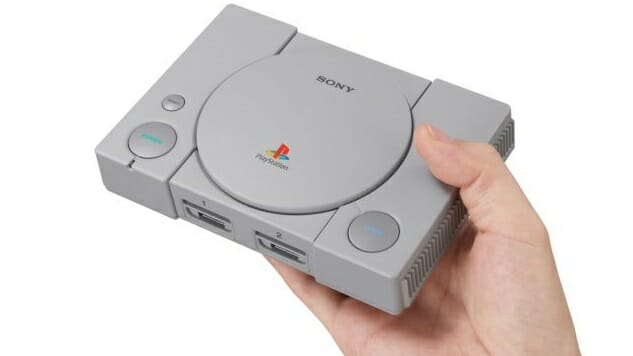
Nostalgia isn’t always easy. Take the PlayStation Classic. Sony’s new retro microconsole tries to coast by on familiarity and positive memories, but it doesn’t come anywhere close to pulling it off.
I admit I’m not the best audience for this device. I owned an original PlayStation back in the day but it was never my console of choice. The games I loved on it remain some of the very best I’ve ever played—Final Fantasy Tactics, Castlevania: Symphony of the Night, Um Jammer Lammy—but overall that era was the ungainly teen phase of videogames, stuck between an adorable past and a more assured future. Ugly graphics and awkward cameras can make many of those games impenetrable today, and those problems were notable at the time, too. Some games were able to overcome those issues, like Metal Gear Solid and Final Fantasy VII, but others that are considered classics today still left me cold back then. I didn’t have any special love for my PlayStation or any late ‘90s console at the time, and I haven’t magically developed that in the decades since.
This isn’t a PlayStation Classic problem so much as a me problem. What is a problem with the PlayStation Classic, though, and a crucial one that undermines the entire concept, is that Sony has failed the people who do have a deep well of nostalgia for the original PlayStation. With a poor selection of games and a baffling decision to use versions that don’t perform as well as the ones originally released in America, the PlayStation Classic fails to recreate the games that defined this console in the way that we originally played them 20 years ago.
The 20 games on the Classic include some legitimate classics. Metal Gear Solid, Resident Evil and Final Fantasy VII might be the three most important games ever released on the PlayStation, and they’re here in all their glory. Tekken 3 is the canonical PlayStation-era fighting game, and Oddworld: Abe’s Oddysee, Intelligent Qube and Wild Arms are all good and fondly remembered games that deserve more attention today.
What’s not here is staggering, though. Tomb Raider and Crash Bandicoot both defined the PlayStation as much as any other franchise, and neither is represented. Parappa the Rapper is actually owned by Sony, but neither it nor its sequel Um Jammer Lammy made the cut. The other two games I initially mentioned in this article, Final Fantasy Tactics and Symphony of the Night, are also missing, despite being two of the system’s biggest games. If you made a short list of games you’d expect to be on a PlayStation Classic based on how they sold at the time and how significant they were for the console’s reputation, the actual lineup would probably be missing at least half of them.
What’s worse is that many of the games on the PlayStation Classic use the European versions, which run at a lower frame rate than the North American releases. That’s especially disastrous for a game like Tekken 3, where high level play hinges on the frame rate. This doesn’t impact Metal Gear Solid or Final Fantasy VII, but it is an issue with almost half the games on the Classic.
The weird roster of games isn’t entirely a surprise. It’s a problem that will face two of the major hardware publishers as they try to cash in on the retro craze; unlike Nintendo’s systems, most of the biggest games on the PlayStation and Xbox were released by third parties, which means Sony and Microsoft will have to strike deals to include them on boxes like the PlayStation Classic. If those third party publishers have recently rereleased those games themselves, or have plans to do so, they probably won’t jump at the chance to let another company also put them back on the market. The license fees for those third party games might also explain why the PlayStation Classic costs more than Nintendo’s NES Classic and SNES Classic, despite having a less comprehensive selection of games.
Using the inferior PAL versions of games for the PlayStation Classic instead of the NTSC ones reveals the truth behind this release, though. Sony made that choice because it was cheaper to release one version of the PlayStation Classic throughout Europe and North America than to make custom versions for both markets. It’s a pretty massive corner that they’ve cut here, one that directly diminishes the nostalgia and enjoyment that non-European players will feel while playing these games. That weird cheapness evidences itself in other ways, too, from a barebones menu screen, to the lack of an AC adapter. (It uses a USB power cord.)
The PlayStation Classic shows the downside of nostalgia. If I was somebody who had an abiding love for the original PlayStation, and who was excited about revisiting the console’s best games today, the PlayStation Classic would be deeply disappointing. It might look like an adorable little PlayStation, but it’s missing what made people love that box in the first place: the games. It’s a cheap, careless play for the money of nostalgia-besotted fans, and a textbook example of how not to do one of these retro microconsoles.
Garrett Martin edits Paste’s comedy and games sections. He’s on Twitter @grmartin.